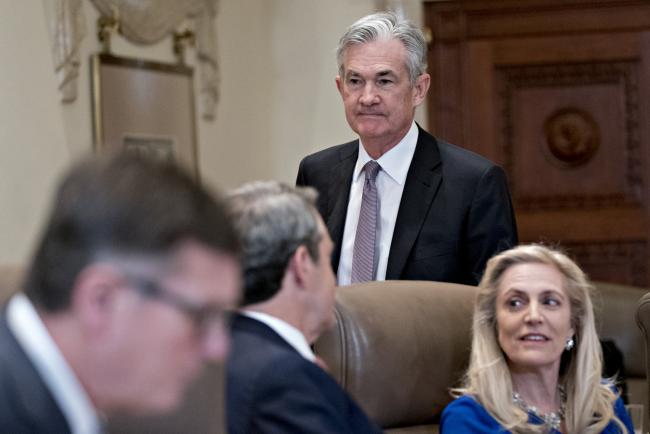(Bloomberg) -- As Federal Reserve Chairman Jerome Powell and his colleagues gather this week for a policy making meeting, some of them will likely have 1995 on their mind.
That was the year that the Fed initiated a mid-course correction in monetary policy, cutting interest rates after a sustained bout of tightening. Now some officials and investors are beginning to wonder if the Fed will again have to ease its stance after raising rates four times in 2018.
“I do see some parallels between the 1995-96 period and what we’re currently in,’’ said David Stockton, who was at the Fed at the time and is now with the Peterson Institute for International Economics. “There’s always some concern that maybe you’ve overdone it’’ after repeatedly raising rates.
Powell and his colleagues are widely expected to hold rates steady at their April 30-May 1 meeting. What Fed watchers will be looking for are any hints in the post-meeting statement -- or more likely, Powell’s subsequent press conference -- that the central bank is teeing up a rate cut for later in the year.
“I think they stay on hold here for a long time, but there is a risk that lower inflation does push them to think about easing,’’ said Bruce Kasman, chief economist for JPMorgan Chase & Co (NYSE:JPM). in New York.
Fed Vice Chairman Richard Clarida has pointed to 1995 and 1998 as two instances where the central bank reduced rates as insurance against a weakening of the economy, even though it didn’t see a recession lurking.
Some Fed watchers think 1995 is the better template for what’s happening now.
In 1998, the central bank cut rates three times in rapid-fire succession to short-circuit a financial crisis brought on by the Russian debt default and the near collapse of hedge fund Long Term Capital Management. There’s no such triggering event today.
In contrast, there’s a number of parallels between now and 1995-1996. The Fed justified its three rate reductions back then -- in July and December 1995 and January 1996 -- by pointing to moderating price pressures.
Policy makers today are even more fixated on the low level of inflation -- and have made no secret of their desire to see it higher.
Excluding volatile food and energy costs, the personal consumption expenditures price index rose 1.6 percent in March from a year earlier. That compares with the Fed’s 2 percent inflation target.
U.S. and global growth was also slowing a quarter of a century ago, if anything more markedly than now.
Other similarities: The Fed plowed ahead with rate drops in 1995-96 even though it judged the labor market to be pretty tight and stock prices to be buoyant. Indeed, it was in December 1996 that then Fed Chairman Alan Greenspan warned of “irrational exuberance’’ in financial markets.
And then there is the politics. President Bill Clinton was up for re-election in 1996 while Donald Trump faces the voters next year.
Clinton refrained from openly commenting on Fed policy after his economic team told him that public pressure on the independent central bank could prove counter-productive.
Trump has not been so reticent, repeatedly calling on Powell & Co. to open up the monetary spigots in order to juice the economy and the stock market.
Trump’s acolytes argue that his tax cuts and deregulatory actions are paving the way for a productivity-driven economic boom that won’t spur inflation.
If that came about -- and many economists are skeptical it will -- it would be akin to the late 1990s surge in growth that stemmed from the proliferation of the Internet.
Former Fed Vice Chairman Alan Blinder, who led the charge for lower rates in 1995, cautioned against drawing too many parallels to today.
One big difference, according to Blinder: The Fed had clearly raised rates too far back then, jacking them up by 0.75 percentage point in November 1994 and 0.5 point in February 1995 before beginning to trim them back in July of that year.
“We got a little hyper-excited,’’ Blinder, who is now a professor at Princeton University, said.
It’s not so apparent that the Fed overdid it this time. Its 0.25 point December hike lifted rates just barely into neutral territory, where monetary policy neither spurs not restricts growth.
While Blinder said a rate cut is possible, he reckons that the Fed’s next move is more likely to be an increase. For now though, “I’m perfectly fine with their patient stance.”
So too is Janet Yellen, who also argued for a rate pullback a quarter century ago when she was a Fed governor.
“It seems to me that monetary policy is well positioned,’’ the former Fed chair said at an April 10 event in Houston.
Peterson’s Stockton thinks the central bank eventually will trim rates.
“They’ll take out some insurance” at some point, he said. Just as in 1995-96, “the risks to doing that are relatively low.”
